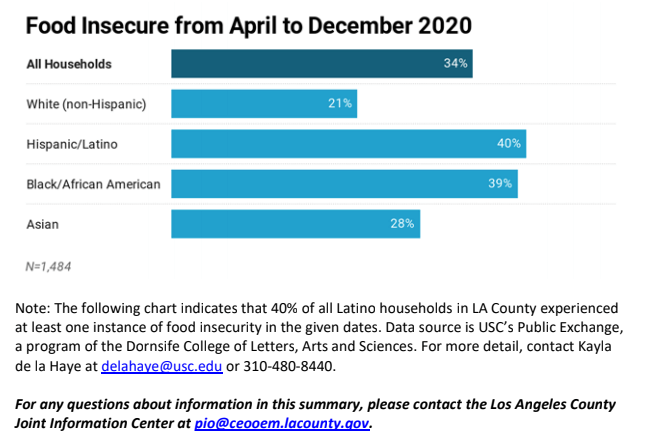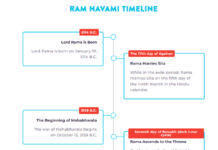Vidya Sethuraman
India Post News Service
EMS Briefing on Feb 25 gave detailed information on food insecurity in LA County and the County’s multi-pronged response, including CalFresh (the new name for Food Stamps) and how to apply. Nearly 1,960,000 doses of COVID-19 vaccine have been administered across Los Angeles County. Of those vaccinated, 600,497 people have received second doses.
The pandemic has overwhelmingly impacted women, people with low incomes and the unemployed. Higher income groups that don’t typically struggle to afford food have also been affected.
Dr. Eloisa Gonzalez, MD, MPH, Director of Integrative Medicine, The Wellness Center at LAC+ISC Historic General Hospital said while the falling case statistics and rising vaccination rates seem to be promising, urged Angelenos to remain vigilant in practicing safety protocol as the virus continues to take lives. She added DPH and USC are investigating 4 cases of U.K Variant ofCOVID-19 at USC.
Currently, we have 18 confirmed cases of the UK variant in LA County. Right now, we have residents 65 and older, health care workers and those in assisted living facilities are able to make appointments for the vaccine. Starting March 1, many more people will become eligible for a vaccine in L.A. County: Education and childcare employees, food and agriculture workers, and emergency services and law enforcement personnel will all be able to sign up for their first doses. We are very hopeful our allocation of COVID-19 vaccination doses increases as more vaccine options become available, added Dr.Eloisa.
Gary Gero is Director of Los Angeles County’s Emergency Food Security Branch said 1 in 3 Angelenos have experienced food insecurity during this pandemic. Not having enough to eat is a major public health concern, not only because it causes hunger and distress, but also because it’s linked to poor nutrition and unstable diet patterns. Residents can call 2-1-1 for help or visit: https://covid19.lacounty.gov/food/. Multiple drive-thru food giveaways take place throughout Los Angeles County with no eligibility requirements, said Mr.Gero.
The highest rate of food insecurity was in April, coinciding with LA County’s peak in unemployment, when nearly 40% of low-income households and a quarter of all Los Angeles households struggled at some point to afford food. By now, food insecurity rates had dropped but we still have average applications for food resources programs going up every month. There are many different types of food resources available in L.A. County, both government and nonprofit. Finding the right program can be overwhelming to those newly food insecure. 211 LA – a nonprofit contracted with the County to act as a hub for community support — can help people navigate the different food programs. They offer a 24-hour 2-1-1 call line, website and chat.
CalFresh is a state-administered program that’s federally supported through the U.S. Department of Agriculture’s Supplemental Nutrition Assistance Program, or SNAP, which replaced food stamps in the prior decade. Recipients are supplied with electronic benefits debit cards for use in stores, said Abraham Gomez, CalFresh Program Manager, L.A. County Dept. of Public Social Services. A typical monthly benefit is roughly $400. These benefits provide help 2 year-round instead of one-off assistance like food pantry giveaways. An estimated 2 million L.A. County residents are likely eligible for CalFresh, but only 1.3 million are currently participating. If you or a loved one is suffering from food insecurity, you can sign up for monthly grocery benefits from CalFresh. It only takes 10 minutes to apply at https://www.getcalfresh.org/
The vast majority of government-led food support services in L.A. County are available to residents in need, regardless of their immigration status. Residents can apply for benefits online at www.dpss.lacounty.gov or www.getcalfresh.org. Guidance is available in multiple languages.







